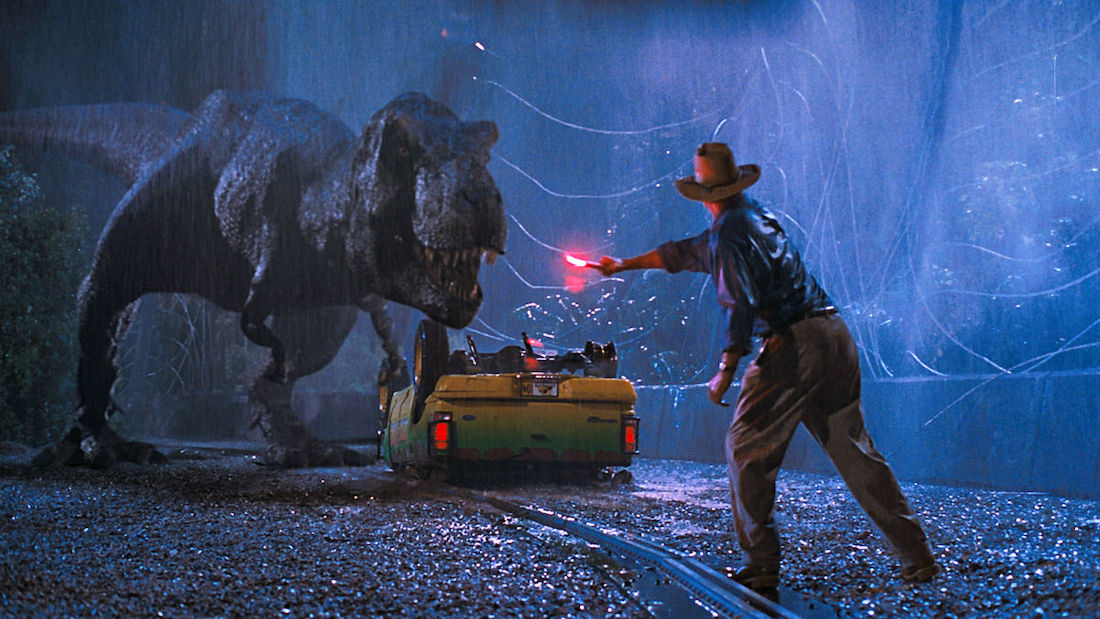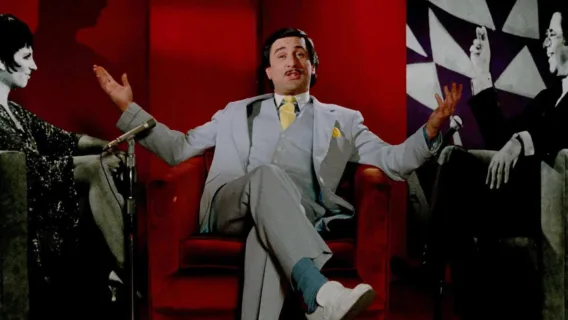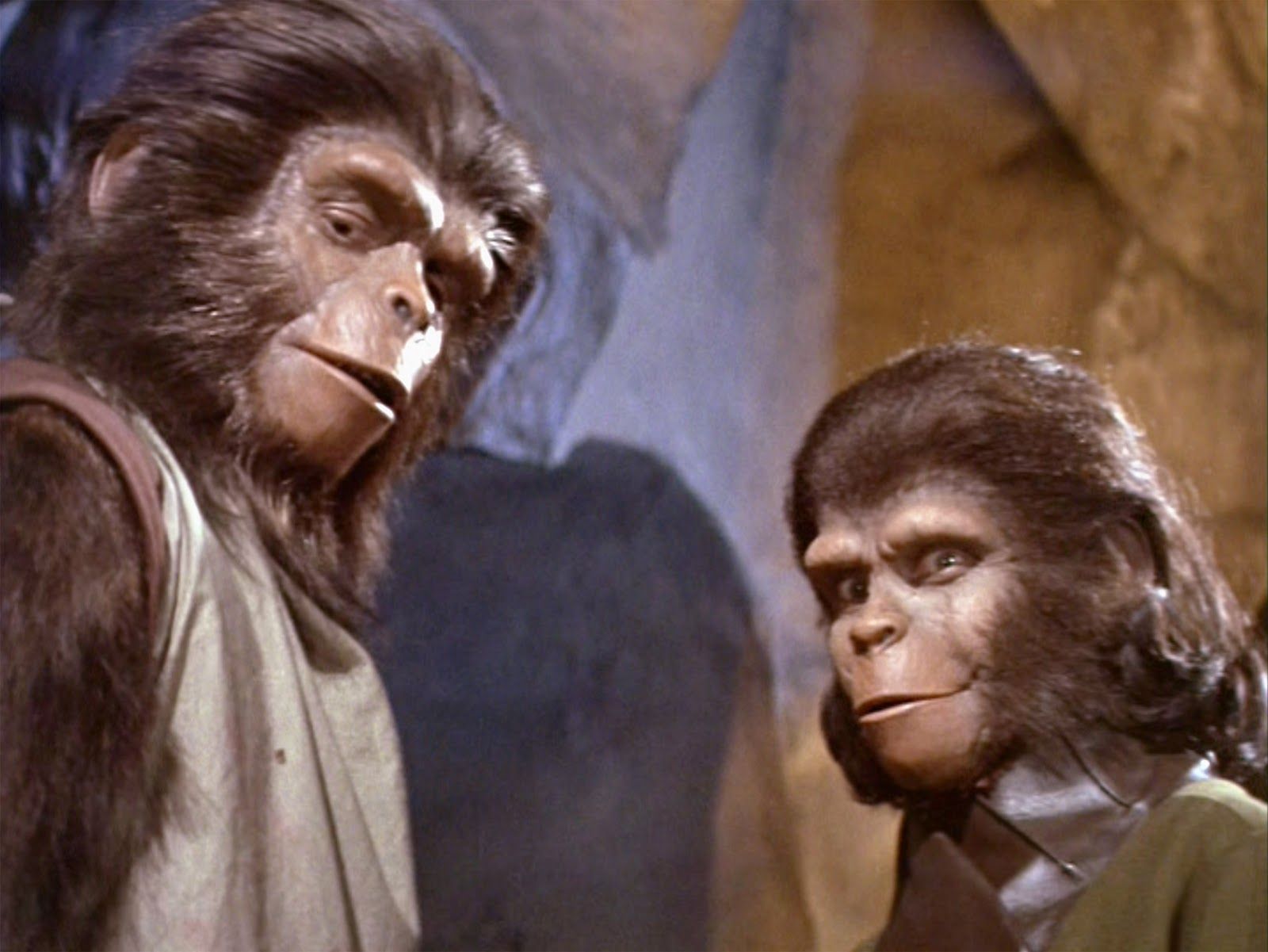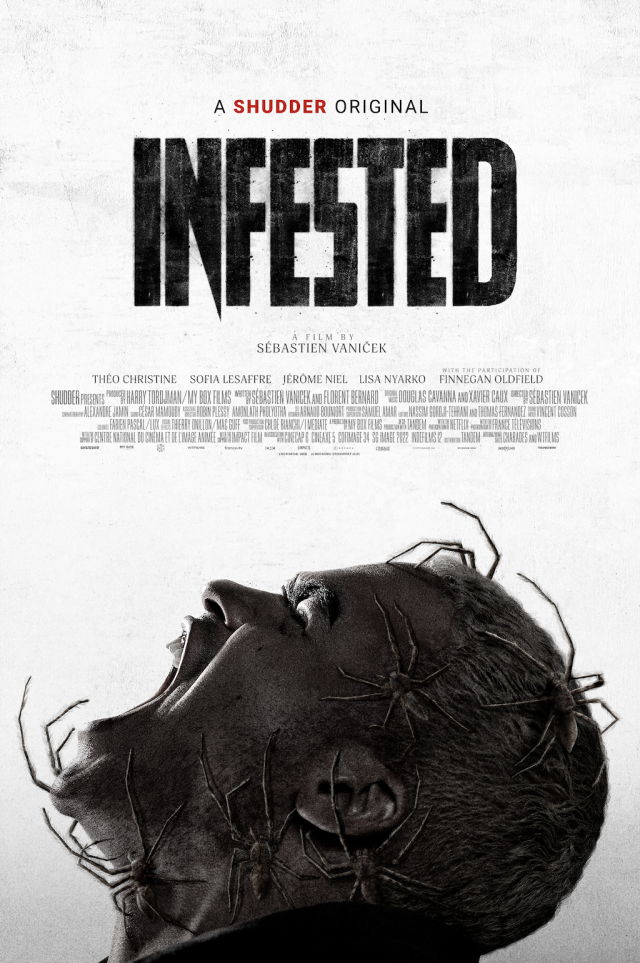I have probably seen Steven Spielberg’s “Jurassic Park” more than five times over the last 29 years. When I was just a 10-year-old kid, it was simply awesome to watch all those magnificent dinosaurs on a big screen. When I was a 20-year-old lad, that awe seemed to fade away as I and many others flocked around a new Harry Potter film or any other latest Hollywood blockbuster drenched in CGI. When I was a 30-year-old dude, I got a chance to watch “Jurassic Park” on a big screen again thanks its timely 3D release, I grumbled about its rather weak story and character. But I still admired its first-rate technical aspects.
Although it understandably looks a bit dated at present (I was personally tickled by the brief appearance of CD-ROM equipment, for example), “Jurassic Park” is a thrilling film that holds its place well in cinema history. I may be a bit less enthusiastic about it than before, but the movie still has its own wonder and imagination unlike the forgettable sequels that followed. And while it may not be one of Spielberg’s best works, it deserves to be regarded as a classic.
“Jurassic Park” goes along with its premise without being too serious, and it magnificently delivers what it promises. Yes, we all knew we were going to see dinosaurs before going into the theater at that time, but we could not help but admire its series of awe-inspiring sights including a gigantic Brachiosaurus on lunchtime, and we fully identified with what the characters feel in front of these amazing sights. I know now that, as old cousins of birds, many dinosaurs might have been furrier than we imagined, but the movie still reminds me of how enthusiastic I was about dinosaurs just like many kids eagerly memorizing those long names of various dinosaurs.
Spielberg and his crew effectively used CGI as another new tool available to them along with the older kinds of special effects. The CGI in the movie is deftly mixed with live-action models to create very believable illusions on the screen, and the result is more distinctive and palpable than the bland spectacles we usually get during summer blockbuster season nowadays. While CGI allowed more kinetic freedom for the dinosaurs in the film, more traditional special effects were also crucial in making them look and feel like living animals. That is why that intimate encounter scene with a Brachiosaurus, which depended a lot on animatronics, carries an equal weight to the majestic CGI introduction scene of Brachiosaurus in full view.
Stan Winston, Dennis Murren, Phil Tippett, and Michael Lantieri deservedly received a Best Special Effects Oscar for their work, and the movie also won two Oscars for its sound mixing and sound editing. We will probably never discover how dinosaurs actually sounded like, but the sound department did a very good job of making the creature sound effects both plausible and believable. In addition, John Williams’ score superbly enhances many amazing sights in the film, and it is a shame that it was not Oscar-nominated along with his equally memorable score for Spielberg’s great film “Schindler’s List” (1993), which, along with “Jurassic Park,” has made for the greatest one-two punch in Spielberg’s long and illustrious career.
The story and characters are not exactly its strongest aspect, but that is not the fault of the movie. The movie is based on the novel of same name by Michael Crichton, and, though I enjoyed reading it, I was far more fascinated with its technological/scientific details rather than its rather bland story and characters (Remember those fancy mathematical images at the beginning of each part in the book?). The screenplay by David Koepp and Michael Crichton does try to improve the story to some degree, and, for instance, it makes John Hammond more human and sympathetic compared to his greedy and egoistic counterpart in the novel. At one point, Richard Attenborough has a small poignant scene revealing Hammond’s idealistic motive behind his ambitious project, and you come to feel sorry for Hammond while also recognizing the errors and consequences of his deeply misguided project.
However, the main functions of most of main characters in the film are still 1) being dumbfounded and 2) being chased by whatever they encounter on the island. Three of them are: Dr. Alan Grant (Sam Neill), a paleontologist; Dr. Ellie Sattler (Laura Dern), a paleo-botanist who is Dr. Grant’s co-worker/girlfriend; and Dr. Ian Malcolm (Jeff Goldblum), a cocky mathematician who usually talks about that famous chaos theory or gives good old-time moral/ethical lectures on Hammond’s advanced biotechnology to others. They are invited to the island to help assure Hammond’s concerned investors, but soon find their initial apprehensions are right not long after they begin the tour ride along with Hammond’s two grandchildren and a lawyer representing Hammond’s investors, whose grisly demise in the film is still an amusingly vicious moment to savor.
The movie eventually turns into your average monster flick as the main characters run for their lives during its second half. Fortunately for us, Spielberg is a master who can play us like piano just like Alfred Hitchcock. Even with the seemingly plain shot showing the ripples in a glass of water (this simple effect was created by plucking guitar strings below that glass, by the way), he chills us with a clear sense of approaching terror, and then there comes a frightening action scene featuring a certain fearsome dinosaur quite determined to eat more than what is served. Although they are not directly shown on the screen during most of the running time, we indirectly come to also learn about the Velociraptors’ sheer ruthlessness (Neill has a darkly humorous scene where his character terrorizes a chubby kid by describing how they hunt). These savage hunters are then indeed effective villains during the tense kitchen sequence where Hammond’s grandchildren must depend on their wits and guts to escape from these lethal predators.
“Jurassic Park” will incidentally have its 30th anniversary in 2023. Sure, Hollywood CGI has moved on a lot since its remarkable achievement in 1993, but there’s still lots of awe and excitement whenever Spielberg’s camera beholds its small and big prehistoric creatures. You can still believe they are alive again.











